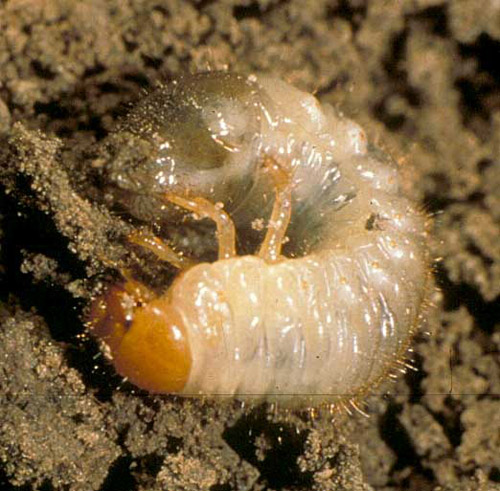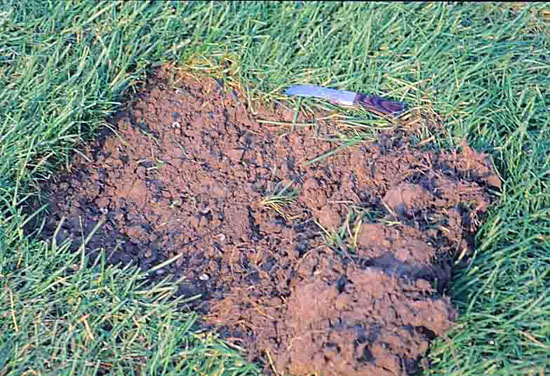Issue 14, August 13, 2010
White Grubs
White grub damage to turf typically appears in the second half of August, continuing into October. Damage will appear as wilted, light tan turf in which the sod is easily pulled up. In heavily damaged areas, the turf can be rolled back like a carpet. Initial damage will appear as small patches usually about a foot across in which the grass blades are turning lighter green to tan. Although the turf in these early damage patches will pull up easier than undamaged areas, it will still be firmly rooted.

White grub numbers are likely to be high enough to cause turf injury in areas of the state that experienced dry, hot periods in the second half of June and first half of July if non-irrigated turf went dormant, being light green to tan. In these areas, egg-laying was likely to be concentrated enough in irrigated turf to result in damaging white grub populations. If the adult Japanese beetle and/or masked chafer populations were high, the likelihood of turf injury is increased.
Scout for damaging white grub numbers by cutting through the turf with a heavy knife. Choose areas where the grass blades appear to be lighter in color. Working your fingers through the cut sod, grasp the roots and peel back the sod. In well-watered turf, the white grubs will be obvious in the root zone. In drier turf, they are likely to be three to four inches deep in the soil. Most of the white grubs will be on the soil that was revealed when the sod was peeled back. Also check the soil on the underside of the sod for grubs. Till the soil with the knife to pop out any grubs that are deeper in the soil.

Ten or more white grubs per foot square, an area twelve inches by twelve inches, is a good rule of thumb to determine whether there are enough to cause turf injury. If the turf is heavily used, damage may occur with as few as eight grubs per foot square. Lightly used turf may not show damage with up to fifteen grubs per foot square.
Control can be achieved quickly with an application of trichlorfon (Dylox). Although Dylox will kill white grubs within three days, it only lasts for five days. If the soil is dry, it is recommended to water the turf a day or two before treatment to bring the grubs up into the root zone where they will be reached by the Dylox. Application of chlorantroniliprole (Acelepryn), clothianidin (Arena), imidacloprid (Merit), or thiamethoxam (Meridian) will also be effective. These last longer but usually take longer to kill the grubs. Irrigate with at least one-half inch of water to move the insecticide down into the root zone where the grubs are located.--Phil Nixon
Author:
Phil Nixon